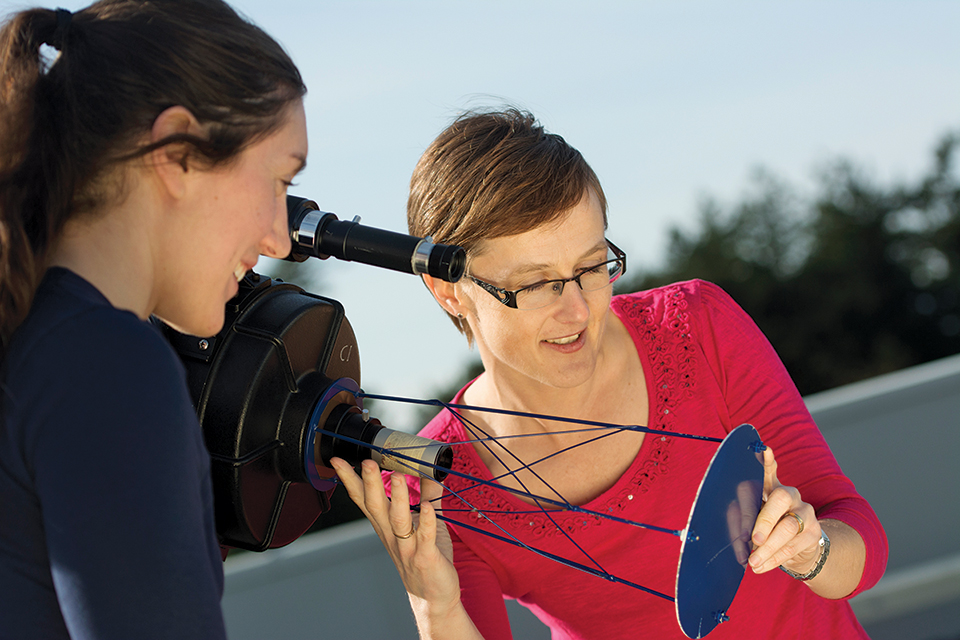Boundless complexity
- Vimala Jeevanandam

Astronomy professor Sara Ellison, who plays violin in her free time, says studying the night sky is like learning to appreciate the intricacies of music.
When Sara Ellison looks up at the stars, she does so with the hallmark precision of a scientist. “After so many years of studying astronomy, it’s hard for me to channel the humanist wonder that most people have when they look into the night sky,” says the University of Victoria astrophysicist. But her wonder been replaced with something more profound.
As a professor in the Department of Physics and Astronomy, Ellison is part of UVic’s distinguished astronomy, astrophysics and cosmology group, one of the best such programs in Canada. Her work focuses on galaxies—gravitationally bound systems, such as the Milky Way, that contain millions to trillions of stars, along with gas, dust and dark matter—and tries to unravel how these endlessly complex systems form and evolve.
Ellison has been examining galaxy mergers—a deceivingly benign-sounding process wherein galaxies are pulled towards each other by gravitational forces, causing the orbits of billions of stars to break and reform. Less visibly, but more importantly, the gas that is spread between the stars is also affected by gravitational forces, spiralling inwards where it can pile up to form new stars and cascade onto the galaxy’s central supermassive black hole.
“It’s a catastrophic and intricate process that takes place over hundreds of millions of years,” she explains. “By looking at galaxies in different stages of a merger, we can put together the puzzle of how this process happens.” She does this by observing distant galaxies using some of the most powerful and sought-after telescopes in existence, including the Hubble Space Telescope and ALMA (Atacama Large Millimeter/submillimeter Array) Observatory in the Atacama Desert of northern Chile.
Ellison and her group use these observations to refine existing models and computer simulations of the process. And as the puzzle comes together, new questions arise. “We are still honing our understanding of the physical laws of the universe,” explains Ellison. “Most recently, we’ve observed that recently merged galaxies contain more gas than our models would predict.” And so, the next step then is to try to understand why extra gas is there by making detailed maps, showing hot zones of gas accumulation in these distant galaxies.
Greater Victoria is an exceptional spot for this work. The presence of both the astronomy group at UVic and the National Research Council’s Herzberg Astronomy and Astrophysics Research Centre gives the area one of the largest concentration of astronomers in Canada.
Over the past couple of years, Ellison has spent her spare time—between being a researcher, graduate advisor, supervisor and mother—learning how to play the violin. “I started with learning ‘Three Blind Mice’, and I’m still quite bad,” she says. “But I’m playing with a local folk orchestra and it’s a lot of fun.”
“In some ways, looking at the night sky is like enjoying an intricate piece of music,” muses Ellison. “You can enjoy either with very little knowledge, but through study you can begin to understand its boundless complexity.”
Discover the night sky at the UVic observatory weekly open house. The public is invited to discover more about astronomy by viewing the cosmos through one of the largest telescopes on a Canadian university campus. Join us on Wednesday nights on the roof of the Bob Wright Centre throughout the academic year, September to April (with the exception of Dec. 14–Jan. 4).

